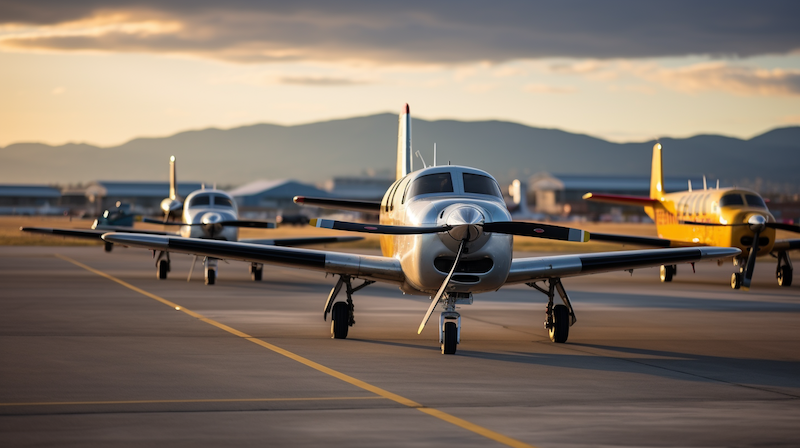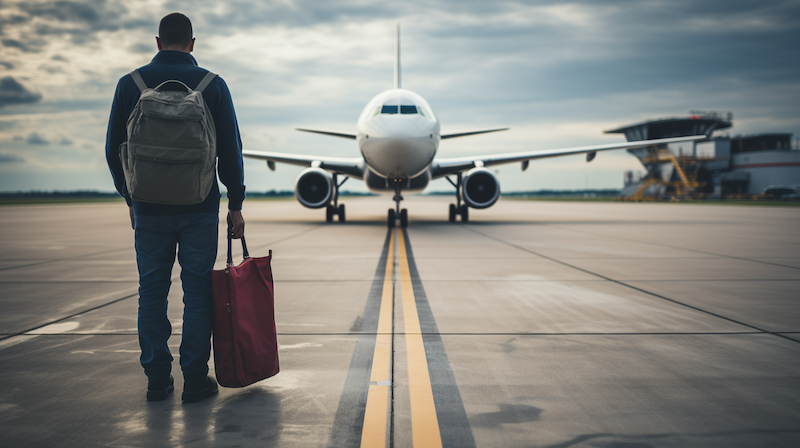If you have decided to pursue a career as a commercial pilot, and you do not want to go through a Cadet Pilot Program offered by some of the major airlines that offer flight training in their partnered training institutes, the next options you would have is to go for either an Integrated Pilot Training Program or a Modular Pilot Training Program. For either of these programs, one of the most important decisions you will have to make is which flight school to attend.
The quality and reputation of your flight training can have a significant impact on your future employment opportunities and career advancement. Therefore, you need to do your homework and choose a flight school that meets your needs and expectations.
But how do you select a flight school for commercial pilot training? What factors should you consider? What questions should you ask? What are the different categories of aviation? In this blog post, I will be providing step by step instructions, following which can help you in making a better choice to kick start your aviation career.
1.Create a List of Schools

The first step in selecting a flight school is to create a list of potential schools that have good reputations and offer the program of preference. As mentioned earlier, there are two main types of programs for commercial pilot training: modular and integrated.
Before creating a list of school, one need to know the different kinds of schools that offer flight training and how each type is different for each individuals needs and preferences. You can read about different types of schools here.
Shortlist schools offering Modular programs:
Modular programs allow you to complete your training at your own pace and budget, by taking separate courses or modules that lead to different licenses or ratings.
For example, you can start with a private pilot license, then add an instrument rating, a commercial pilot license, a multi-engine rating, etc. Modular programs are usually cheaper and more flexible, but they may take longer and require more self-discipline and motivation.
Shortlist schools offering Integrating Programs
Integrated programs offer a structured and comprehensive curriculum that covers all the required training for a commercial pilot license in one package.
For example, you can enroll in an airline transport pilot (ATP) program that prepares you for the highest level of pilot license in one go. Integrated programs are usually faster and more intensive, but they may be more expensive and less adaptable to your personal circumstances.
Depending on your goals, preferences, and resources, you can choose the type of program that suits you best. You can also consider other factors such as the duration, cost, location, accreditation and recognition of the program.
To find schools that offer the program of preference, you can use various sources such as:
- Online databases or directories of flight schools, such as this one from the Federal Aviation Administration (FAA) or this one from the Civil Aviation Authority (CAA).
- Online reviews or ratings of flight schools, such as this one from Pilot Career News or this one from Pilot Career Centre.
- Online forums or communities of pilots or students, such as this one from PPRuNe or this one from Reddit.
- Personal recommendations or referrals from friends, family or acquaintances who have attended or know about flight schools.
2.Compare the Cost of Training

The cost of training is the next important factor to consider when selecting a flight school. The cost of training can vary widely depending on the type of program, the type of aircraft, the location of the school, the quality of the instructors, the availability of financial aid or scholarships, etc.
The cost of training can be divided into two main categories: fixed costs and variable costs.
- Fixed costs are the costs that are not affected by the number of hours you fly or train. They include tuition fees, registration fees, exam fees, books and materials fees, etc.
- Variable costs are the costs that depend on the number of hours you fly or train. They include aircraft rental fees, fuel fees, instructor fees, landing fees, etc.
To compare the cost of training between different schools, you need to add up both fixed and variable costs and estimate the total cost for completing your desired program. You also need to consider other expenses such as accommodation, transportation, food, insurance, etc. For example you can look at the data on cost of flight training program at BCIT here
To get accurate information about the cost of training, you should contact each school directly and ask for a detailed breakdown of their fees and charges. You should also ask about any hidden or additional costs that may arise during your training.
For example, you may have to pay extra for retests, flight tests, simulator sessions, etc. You should also ask about any financial aid or scholarships that may be available to reduce your cost of training.
3. What are the credentials of the operators?
An important factor to consider when selecting a flight school is the flying credentials of the operators. The operators are the people who own, manage and run the flight school. They are responsible for ensuring that the flight school meets the regulatory and safety standards, and that the instructors and students receive adequate support and guidance.
The flying credentials of the operators can indicate their level of experience, expertise and professionalism in the aviation industry. Some of the credentials that you can look for are:
- The type and number of pilot licenses or ratings that they hold or have held in the past
- The type and number of aircraft that they have flown or owned in the past
- The type and number of aviation-related businesses or organizations that they have been involved in or affiliated with in the past
- The type and number of aviation-related awards or recognitions that they have received or achieved in the past
- The type and number of aviation-related publications or presentations that they have authored or contributed to in the past
You can find out about the flying credentials of the operators by visiting their website, reading their biography, asking them directly or checking their references. You can also compare their credentials with those of other operators in the industry or in your region.
4. How Long Has the School Been in Business?
When selecting a flight school is how long the school has been in business. The length of time that a flight school has been operating can indicate its stability, reputation and quality of service. A flight school that has been in business for a long time may have:
- A proven track record of success and customer satisfaction
- A loyal and diverse customer base and network
- A well-established and well-maintained facility, equipment and fleet
- A experienced and qualified staff and instructors
- A strong and updated curriculum and syllabus
You can find out how long a flight school has been in business by visiting their website, reading their history, asking them directly or checking their references. You can also compare their longevity with those of other schools in the industry or in your region.
5. Is Housing and/or Financial Aid Available?

Another factor to consider when selecting a flight school is whether housing and/or financial aid is available. Housing and financial aid are services or programs that a flight school may offer to help students with their accommodation and tuition costs. Housing and financial aid can make a difference for students who:
- Live far away from the flight school or have to relocate to attend it
- Have limited financial resources or face financial difficulties
- Want to reduce their living expenses or debt burden
- Want to focus more on their studies or training
Housing options may include on-campus dormitories, off-campus apartments, homestays, hostels, hotels or other types of accommodation. Financial aid options may include scholarships, grants, loans, bursaries, work-study programs, payment plans or other types of funding.
You can find out if housing and/or financial aid is available by visiting the website, reading the brochure, asking the admission representative or checking the references of each flight school. You can also compare their housing and financial aid options with those of other schools in the industry or in your region.
6. How Many Students Have Graduated & Current Number of Students?
How many students have graduated from the school and what is the current number of students can indicate the popularity, demand and quality of the flight school. A flight school that has a high number of graduates and students may have:
- A high reputation and recognition in the aviation industry and community
- A high demand and enrollment rate for its programs and courses
- A high quality and standard of education and training
- A high success and placement rate for its graduates
You can find out how many students have graduated from the school and what is the current number of students by visiting their website, reading their statistics, asking them directly or checking their references. You can also compare their numbers with those of other schools in the industry or in your region.
7. What Kinds of Aircrafts are Used for Training?

Another factor to consider when selecting a flight school is what kinds of aircraft are used for training. The aircraft are the vehicles that you will use to learn how to fly. The kinds of aircraft that a flight school uses for training can affect your learning experience, safety and career prospects. Some of the aspects that you can look for are:
- The type and model of aircraft (such as single-engine, multi-engine, piston, turbine, etc.)
- The age and condition of aircraft (such as new, old, well-maintained, well-equipped, etc.)
- The availability and accessibility of aircraft (such as enough, few, reserved, shared, etc.)
- The suitability and compatibility of aircraft (such as relevant, appropriate, comfortable, etc.)
You can find out what kinds of aircraft are used for training by visiting their website, reading their description, asking them directly or checking their references. You can also compare their aircraft with those of other schools in the industry or in your region.
Most flight schools try to use the easiest plane to fly for training their students, check here for a list of the easiest flights to fly that most flight schools use for training purposes
8. Visit Your Short Listed schools
I wanted to give this optional step at the very end because it is not possible for everyone to go to every flight school one has shortlisted either let alone all the flights they selected in the first place as they could be very far from where they live or at time even on a different continent.
But visiting the schools can help you verify the information you have gathered online or by phone, and also give you a sense of the atmosphere and culture of each school.
If and when you visit the schools, you should:
- Schedule an appointment in advance and arrange a tour of the campus, hangar, classrooms, simulator and aircraft.
- Meet with an admission representative or a flight instructor and ask questions about the program, the curriculum, the schedule, the instructors, the student services, etc.
- Observe a class or a flight lesson and see how the instructors teach and interact with the students.
- Talk to current or former students and ask about their experience, satisfaction, challenges and outcomes of the program.
- Take an introductory or discovery flight if possible and see how you feel in the cockpit and in the air.
Although visiting school is not something everyone can do for the entire list of prospective schools they select, it gives a major advantage to take a look at the institute first hand as mentioned above.
Conclusion
Selecting a flight school for commercial pilot training is a crucial decision that can have a significant impact on your future employment opportunities and career advancement. Therefore, you need to do your homework and choose a flight school that meets your needs and expectations.
To select a flight school for commercial pilot training, you should consider the following factors:
- The reputation and program of the school
- The cost of training and other expenses
- The facilities, aircraft, instructors and students of the school
- The housing and financial aid options of the school
- The number of graduates and students of the school
By comparing and evaluating these factors, you can find the best flight school for you. If you are interested in becoming a commercial pilot, we encourage you to pursue your passion and take the first step towards your flying career.
If you would like to know the advantages of becoming a pilot, I have an article that lists 10 good reasons why one should become a pilot here. Remember, flying is not only a skill, but also a fun and rewarding experience that can take you to new heights!

